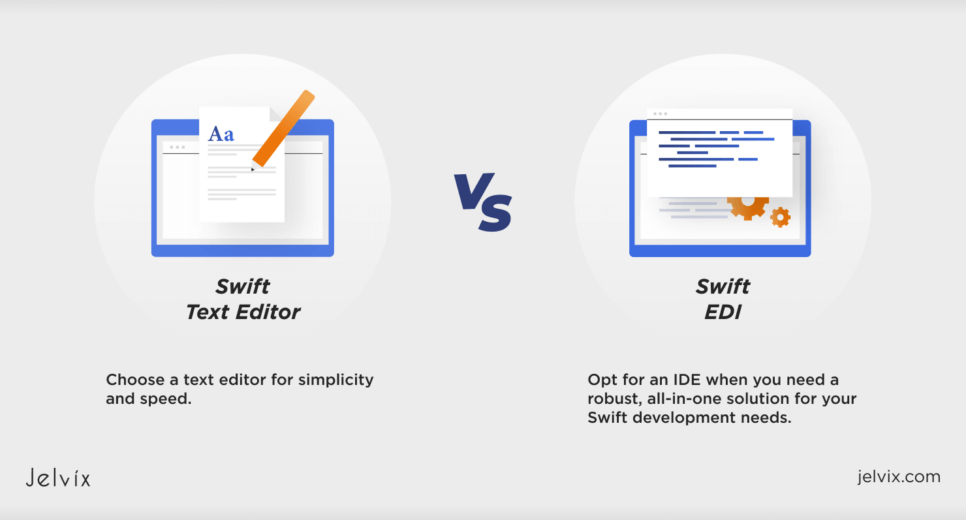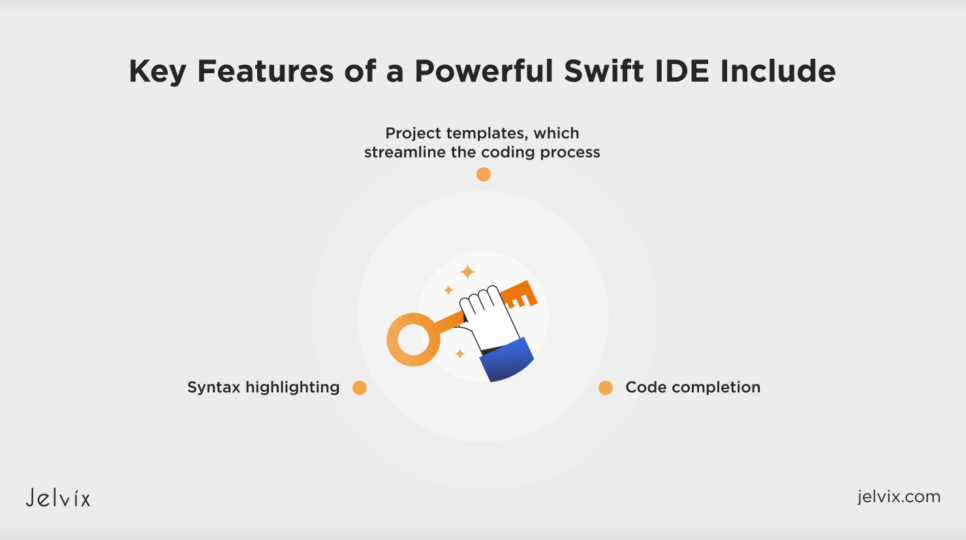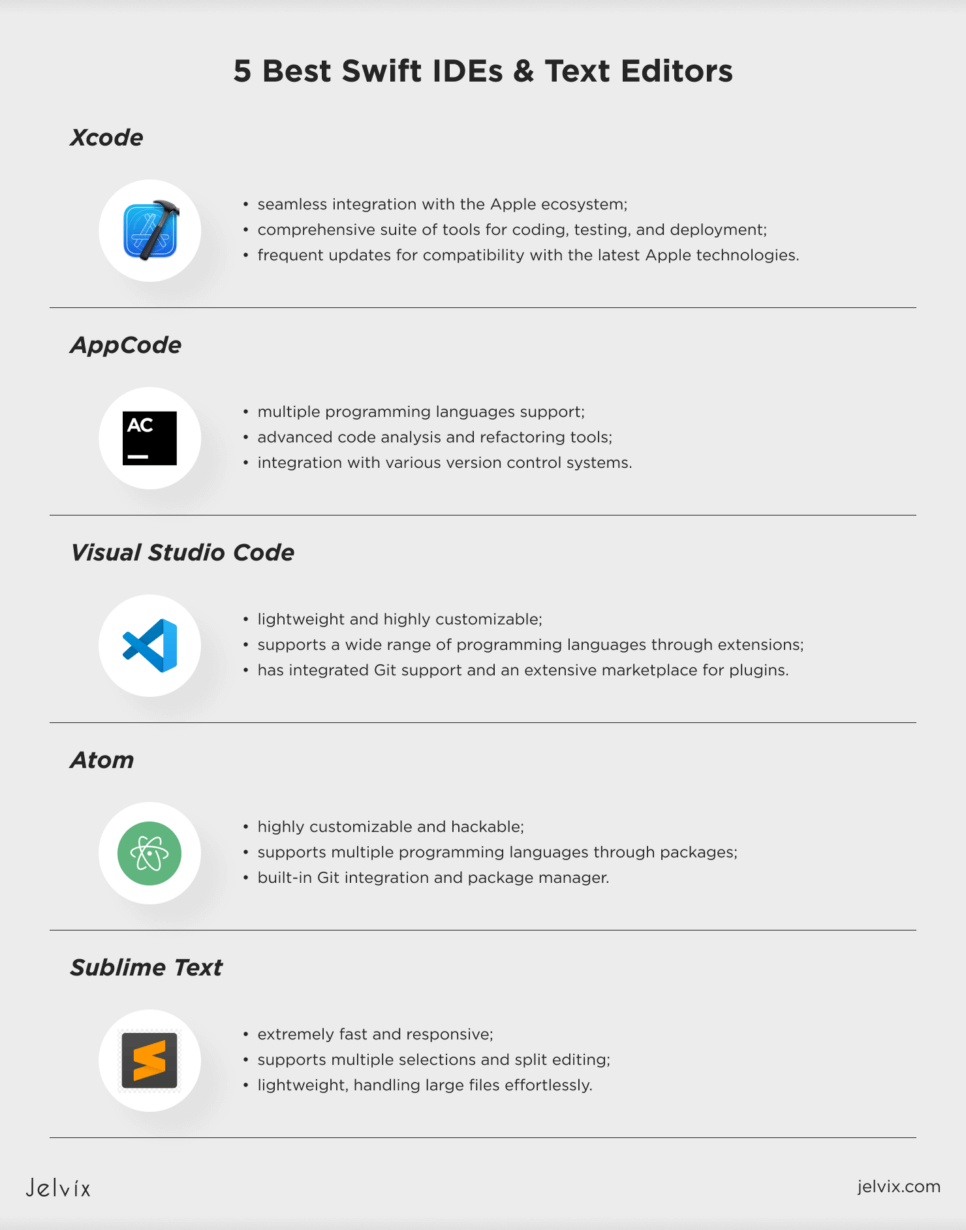Based on the 2024 Stack Overflow Developer Survey, Swift is gaining popularity among developers. What is it about Swift that makes it so widely liked and used? How can you maximize its potential? Using appropriate tools, such as a quality online text editor, can have a significant impact.
Consider a text editor as your virtual notepad for programming. It assists you in easily writing, organizing, and enhancing your code. Furthermore, utilizing online text editors allows you to write code on any device with internet access, providing the flexibility to work on your projects from any location. Let’s investigate how using the correct text editor can enhance your experience with Swift coding and increase enjoyment and efficiency.
Overview of Swift Programming
Swift is a powerful and intuitive programming language created by Apple for developing iOS and macOS applications. Introduced in 2014, Swift has quickly gained popularity due to its modern features. Its clean syntax, including named parameters, makes APIs easy to read and maintain, and you don’t need to use semi-colons, simplifying the coding process. Inferred types make the code cleaner and reduce errors, while modules eliminate headers and provide namespaces for better organization.
Swift strings support international languages and emojis, using a UTF-8-based encoding for optimal performance. Automatic memory management through tight, deterministic reference counting minimizes memory usage without the need for garbage collection. Additionally, Swift’s support for concurrency with simple keywords makes asynchronous coding more simple and less error-prone.
One of the key features of Swift is its safety. It eliminates entire classes of unsafe code and ensures your code is always clear and readable. It uses a type-safe system to prevent errors and manage memory more efficiently, making iOS coding a smoother experience. Another standout feature is Swift’s speed. It is optimized for performance, ensuring your apps run lightning-fast, critical for user satisfaction.
Swift boasts a powerful error-handling system, helping developers identify and fix errors quickly. Its interactive Playgrounds feature allows you to write Swift code and see the results immediately, making it easier to experiment and learn. Additionally, Swift’s interoperability with Objective-C means you can integrate Swift code into existing Objective-C projects.
Swift is widely used across various industries due to its versatility and powerful features.
- In healthcare, it is used to develop HIPAA-compliant apps for managing patient data and improving patient care.
- The finance industry relies on Swift to create secure banking apps that protect sensitive financial information.
- In the education sector, Swift powers interactive learning apps that enhance the educational experience for students.
- The retail industry uses Swift for e-commerce apps that offer seamless shopping experiences.
- The entertainment industry employs Swift to create engaging multimedia apps.
In summary, its modern features and powerful tools help developers create robust and high-performing applications, making Swift a crucial skill for anyone looking to develop apps for Apple platforms.
Swift Text Editor vs. Swift IDE: What’s the Difference?
When diving into Swift coding, you’ll often hear about text editors and IDEs. Both are essential tools for developers but serve different purposes and offer distinct functionalities.
A text editor is a lightweight application designed primarily for writing and editing plain text. In the context of coding, a text editor provides a simple environment for writing code without many extra features. Text editors are fast, easy to use, and often highly customizable. They are great for quickly editing files or making minor changes to your codebase. Popular examples include Sublime Text Editor and Visual Studio Code.
Alternatively, an Integrated Development Environment (IDE) provides a full set of features for software development, making it a more comprehensive tool. Xcode, for example, is a fast Swift IDE that includes a text editor, debugger, compiler, and essential tools for creating, testing, and troubleshooting applications. IDEs increase efficiency by combining all necessary tools in a single location. They provide advanced functionalities such as code suggestions, highlighting syntax, and managing versions, which can greatly enhance development speed.
When should you use each?
- If you’re starting or working on small projects, a text editor is quick and easy to use, ideal for learning and minor edits.
- For larger projects or when you need advanced features to boost productivity, an IDE provides all the necessary tools in one place, making it easier to manage and streamline complex projects.
In summary, both text editors and IDEs have their place in Swift coding. Choose a text editor for simplicity and speed, and opt for an IDE when you need a robust, all-in-one solution for your Swift development needs.
Why Choosing the Right Swift IDE & Text Editor Is Important
Choosing the correct IDE or text editor for Swift iOS development is essential for several reasons. The tools you choose can greatly influence your efficiency in development, the quality of your code, the debugging process, and team collaboration.
First, the right tool can greatly enhance your development efficiency. A powerful Swift IDE provides integrated features such as:
- code completion;
- syntax highlighting;
- project templates, which streamline the coding process.
These features help write code faster and reduce the chances of errors. On the other hand, a well-chosen text editor can offer a lightweight and customizable environment, perfect for those who prefer simplicity and speed for quick edits and smaller projects.
Next, the choice of tool influences your code quality and debugging capabilities. IDEs have built-in debuggers that let you step through code, set breakpoints, and inspect variables, making bug fixing easier. While some text editors support plugins for debugging, an IDE typically provides more comprehensive tools for maintaining high code quality.
Moreover, collaboration and team productivity can benefit significantly from the right development tools. IDEs include version control, project management features, and communication tools, ensuring the team has access to the latest code changes and can track progress. Text editors can also support collaboration with the right plugins. In summary, the right tool can make a significant difference in your coding experience and project success.
Criteria for Selecting Swift IDEs & Text Editors
Choosing the right tools for Swift development involves considering the following factors:
- Performance and Speed. A good tool should be responsive and quick to load, helping you work efficiently without delays.
- Features and Functionality. The best text editors offer syntax highlighting, code completion, and customization. IDEs include debugging tools, project management, and version control, suitable for complex tasks.
- Ease of Use and Learning Curve. Whether you’re a beginner or an experienced user, the tool should be intuitive and easy to navigate, avoiding a steep learning curve.
- Community Support and Plugins/Extensions. A strong community provides resources and help, while plugins allow customization and added functionality.
- Pricing and Licensing. Some of the best tools are free, others are paid for. Ensure the features justify the cost and consider free alternatives if available.
By evaluating these factors, you can find the best text editor or IDE to enhance your Swift coding and boost productivity.
Let's find out how to choose mobile app technology stack.
Top 5 Swift IDEs & Text Editors
Xcode
Xcode is one of the most popular IDEs for Swift development. Developed by Apple it includes a code editor with syntax highlighting, code completion, and refactoring tools. It has a built-in debugger, performance analysis tools, and a simulator for testing applications on various devices. Xcode’s Interface Builder allows developers to design user interfaces visually.
Developers gain from Xcode:
- seamless integration with the Apple ecosystem;
- comprehensive suite of tools for coding, testing, and deployment;
- frequent updates for compatibility with the latest Apple technologies.
At the same time, this IDE has its limits:
- only available on macOS;
- resource-intensive, requiring a powerful machine;
- steep initial setup and learning curve for beginners.
Xcode is ideal for developing iOS and macOS apps, especially for professional developers working on complex projects. It’s perfect for UI/UX designers with its visual Interface Builder. It’s also essential for staying updated with the latest Apple technologies and ensuring app compatibility.
AppCode
AppCode, developed by JetBrains, is a robust IDE for Swift projects. It offers a code editor with advanced features like smart code completion, powerful refactoring tools, and on-the-fly code analysis. It supports many programming languages, including Swift, Objective-C, and C++. Additionally, AppCode integrates seamlessly with various version control systems and comes with a built-in debugger and test runner.
AppCode boasts some benefits:
- multiple programming languages support;
- advanced code analysis and refactoring tools;
- integration with various version control systems.
However, there are some disadvantages:
- steeper learning curve compared to some other IDEs;
- can be resource-intensive;
- not seamlessly integrated with the Apple ecosystem.
AppCode is great for developers working on Swift projects who need advanced code analysis and refactoring tools. It’s useful for teams that use multiple programming languages, as it supports Swift, Objective-C, C++, and others.
Visual Studio Code
Visual Studio Code, developed by Microsoft, is one of the most popular code editors available. It provides a lightweight, highly customizable environment with features like syntax highlighting, intelligent code completion, and integrated Git support. Visual Studio Code supports many programming languages, including Swift, through extensions. It also offers a powerful debugging tool, a built-in terminal, and a rich marketplace for extensions and plugins.
It is beneficial because of:
- being lightweight and highly customizable;
- supporting a wide range of programming languages through extensions;
- having integrated Git support and an extensive marketplace for plugins.
On the other hand Visual Studio Code has downsides:
- requires extensions for full Swift support;
- may lack some advanced features found in dedicated Swift IDEs;
- can become resource-intensive with many extensions.
For developers seeking a lightweight and adaptable editor for Swift projects, Visual Studio Code is an excellent option. It caters to those who juggle multiple programming languages and prefer a customizable environment. Moreover, its integrated Git support and extensive library of extensions and plugins make it a popular choice among developers.
Atom
Atom, developed by GitHub, is a highly customizable text editor popular among developers. It provides features like syntax highlighting, smart autocompletion, and multiple panes for editing. Atom supports various programming languages, including Swift, through community-developed packages. It also offers a built-in Git integration and a package manager for installing additional tools and plugins.
Its pros include:
- being highly customizable and hackable;
- supporting multiple programming languages through packages;
- built-in Git integration and package manager.
However, Atom is not flawless. Cons:
- can be slow and resource-intensive with many packages;
- requires community packages for full Swift support;
- may lack some advanced features of dedicated IDEs.
Atom is a great choice for developers who need built-in Git integration and a flexible editor that can be extended with additional tools and plugins.
Sublime Text
Sublime Text is a fast and responsive text editor known for its simplicity and efficiency. It offers multiple selections, split editing, and a powerful command palette. Sublime Text supports Swift through plugins and provides syntax highlighting, code folding, and a distraction-free writing mode. It’s lightweight and can handle large files with ease.
Developers choose Sublime text because it:
- is extremely fast and responsive;
- supports multiple selections and split editing;
- is lightweight, handling large files effortlessly.
But to make an informed choice, you should be aware of some flaws:
- requires plugins for full Swift support;
- lacks some integrated features of IDEs like debugging and version control;
- paid software with a free evaluation period.
It’s ideal for those who work on large codebases and need a lightweight editor that won’t slow them down. Sublime Text is also great for developers who prefer a clean, distraction-free writing mode and powerful text editing capabilities. However, it is best suited for simpler projects or for those who don’t need integrated debugging and version control tools.
Choosing the right tool for creating Swift software depends on your specific needs. Xcode is ideal for comprehensive, professional development within the Apple ecosystem. For a lightweight and customizable experience, consider tools like Visual Studio Code, Atom, or Sublime Text, each offering unique strengths and flexibility through extensions and plugins.
Comparison of Top Swift IDEs & Text Editors
Choosing the right IDE or text editor for your Swift projects depends on your specific needs and workflow. If you’re deeply integrated into the Apple ecosystem and need a comprehensive development tool, Xcode is the best choice. It provides all the necessary features for professional iOS and macOS development but lacks cross-platform support.
For those who need advanced code analysis and refactoring tools, AppCode is an excellent option, especially if you’re working with multiple programming languages. However, it comes with a steeper learning curve and a cost.
Visual Studio Code stands out for its flexibility and extensive customization options, making it ideal for developers who work with various languages and need a versatile, lightweight editor. Atom offers similar customization capabilities and strong community support, though it can be slower with many extensions.
If speed and efficiency are your top priorities, Sublime Text is a great choice. It’s lightweight and fast but requires plugins for full functionality and comes with a price tag.
Conclusion
For personalized advice tailored to your specific requirements, consider reaching out to Jelvix technical consultants. We can provide expert guidance to help you choose the best tools for your development needs and ensure your projects run smoothly. Start your Swift project today!
FAQ
Can I use multiple IDEs for Swift development?
Yes, you can use multiple IDEs for Swift development depending on your project needs. While Xcode is the official IDE for Swift, other IDEs like AppCode, Visual Studio Code, and Sublime Text can also be used for different aspects of development, such as debugging, code editing, and version control.
Can I use Swift on platforms other than macOS?
While Swift is primarily used for Apple ecosystem development, it can also be used on other platforms. Tools like Swift for TensorFlow and Swift on the Server extend its usability beyond iOS and macOS development.
Are there free IDEs or text editors for Swift development?
Yes, there are several free IDEs and text editors available for Swift development. Xcode is free for macOS users, and Visual Studio Code and Atom are also free and widely used by developers for various coding tasks.
How important is community support for Swift IDEs and text editors?
Community support is very important for Swift IDEs and text editors as it provides access to a wealth of resources, such as tutorials, forums, and troubleshooting guides. A strong community can help resolve issues faster and improve the overall development experience.
Are there any industry-specific uses of Swift?
Yes, Swift is widely used in various industries such as healthcare, finance, and education. For example, in healthcare, Swift is used to develop HIPAA-compliant apps for managing patient data, while in finance, it’s used to create secure banking apps.
Need a high-quality professional?
Use our talent pool to fill the expertise gap in your software development.














